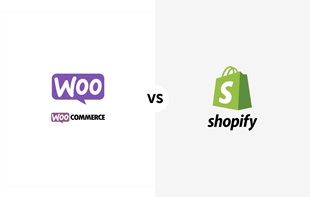Branding, innovation and social: Thinking beyond ordinary finance web design
The future of finance web design: Three key competitive differentiators
Finance websites including online banking and corporate sites are often complex to design and build, given the plethora of information and content involved.
While there’s a plenty to cover when it comes to finance web design, we’re focusing on key competitive differentiators that will potentially set a brand from another: branding, innovation and social.
The impact of colours, logos and typefaces
It takes a great design to make a great finance website. That’s almost taken for granted nowadays. But then again, many people contemplate on the impact of logos, colours and typefaces can make on user experience?
For most outstandingly beautiful corporate and finance web design, designers spend a lot of time on these frameworks. Just like any other web design, they’re the major considerations when it comes to branding.
Because branding very much relies on customer perception, colours in your website need to be consistent with every part of your online and offline marketing (read more here).
Not to mention that colours are critical to establishing the brand’s image, they also play a crucial role in delivering consistency and unifying brand experience, enabling viewers to instantly feel ‘at home’.
‘By building one consistent brand image, the company is able to more effectively meet its customers in the marketplace, whether that is online or offline.’ (via Smashing Magazine).
When it comes to a familiar brand, users often expect to find a particular kind of content throughout their website. Logo, design style, the tone of voice, typography, colours all live up to the viewer’s expectation and determine their online experiences.
Where has innovation gone in finance?
‘Innovation is the key to growth and competitive differentiation.’
But ironically, the finance sector has been generally slower in adapting new technology used to improve user experience than other sectors. In fact, ‘banks are among the least popular consumer businesses’, according to UX Magazine.
While simplicity has been listed as one of the top most desired features for banking websites, experts are also focusing on personalisation as a key feature to enhance online banking experience and win back the favours of customers.
How so?
The idea is quite straightforward. Just think about the small but really annoying issues you often run into when using online banking.
Why can’t individual customers access to and look in detail into their own data? The most we’re allowed to do is to see some recent online statements. Wouldn’t it be fantastic to be able to play with data to find out how much we’re spending on transport every month on the website?
Note that banks have plenty of customer data, which could be used to give deep insight into user behaviours and preferences. The outcome would be hyper-personalised user experience, says UX Magazine. The challenges here are multifaceted, however, due to the existing organisational culture as well as tighter regulations that limit their use of data. Nevertheless, if used effectively, hyper personalisation brought by innovation would most likely to enhance user experience substantially.
The power of social
If you’re still in doubt about the compatibility of finance and social media, then you should definitely look into this post. In a nutshell, the relationship is not impossible (oh, this argument is so 2010).
Just like almost every beautiful website has social media feeds, finance websites shouldn’t be the only exceptional ones. But the reality is that very few financial institutions do actually get it right. So American Express’s Instagram account is the rare breed in the finance sector to be listed as one of the most popular companies on Instagram.
Finance services can benefit a lot from the concept of social banking. Social media like Instagram not only brings customers closer, but also serves as a useful customer service tool. By getting it right, social media could eventually affect how customers make their financial choices.
Today, a handful number of banks have embraced social banking. To name a few, DenizBank in Turkey and ICICI Bank in India now allow their users to use Facebook to transfer money to friends.
Finally, Information collected via social media can also be valuable when creating relevant and personalised content for each customer.
What do you think?
Appnova is a digital agency specialising in web design, UX, eCommerce, mobile app development, branding, content marketing and social media.
Keep following us on Twitter @appnova and “like” us on Facebook for useful news and tasteful digressions about geeky stuff.
Subscribe To Us























































![10 latest trends in digital marketing for beauty brands [Part.2]](/-/media/Appnova/Blog/ScreenShot20151026at1500471940x567/10-latest-trends-in-digital-marketing-for-beauty-brands-Part-2.jpg?mw=310)
![10 latest trends in beauty web design and digital marketing [Part.1]](/-/media/Appnova/BannerImages/18376519151_bbeaa6dafc_b-1/trends-in-beauty-web-design-and-digital-marketing/10-latest-trends-in-beauty-web-design-and-digital-marketing-Part1.jpg?mw=310)








































0.Comments